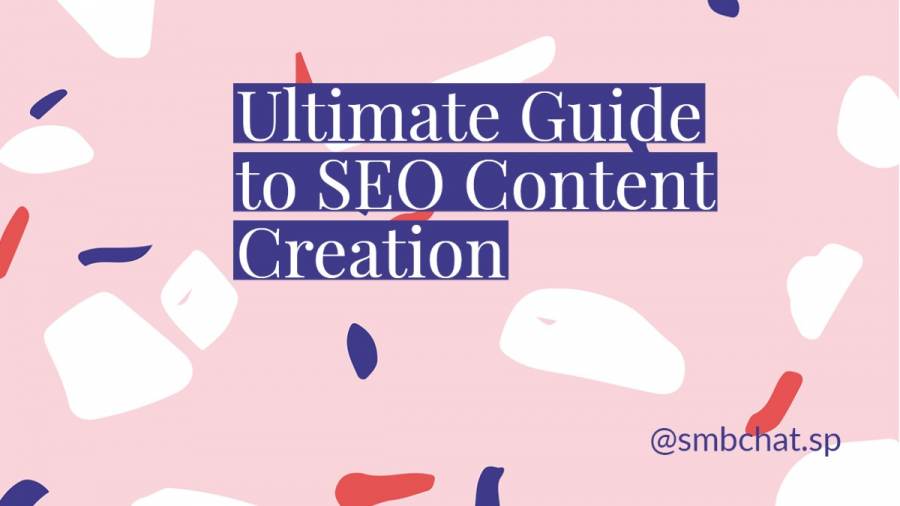How to Write an FAQ Page like a Pro (Examples, Tips, and Mistakes to Avoid)
Your customers will always have questions, even if you are as thorough as possible with your website copy.
And that's why an FAQ page is vital.
The FAQ page is a chance to advance the conversation with your prospective customers without the need to be present physically.
Unfortunately, the FAQ page is often overlooked, or worse, treated like an unimportant part of your website. But the FAQ page is crucial. It's essential to your customers since that's where they get answers to their questions.
What happens when you ignore the FAQ page?
Customers hate to be ignored. Actually, no one appreciates being treated as an afterthought. And you can bet your product that they would rather drop you like a hot potato and find an alternative if you can't give them the answers they seek.
That said, an FAQ page is not beneficial to your customers only. It's useful to your business too. For instance, an FAQ page will save you time and money.
How so?
With an FAQ page, your customer service team won't have to spend lots of time answering repetitive questions. Instead, they can focus on providing personalized support to each customer.
Also, a well-optimized FAQ page will rank high and ultimately drive organic and juicy traffic to your site.
Even with their benefits, FAQ pages can feel dull and repetitive.
That's why we created this guide— to help you write engaging FAQs with personality shining through them.
You can also check out our no-fluff guide on creating an inspiring about us page!
By the time you're done with this mini-guide, you'll have a better understanding of:
- How to create an FAQ page from scratch
- What to include in an FAQ page
- Mistakes to avoid when creating your FAQ page
What is an FAQ page?
Simply put, a FAQ page is a section on your website that provides answers to the most frequently asked questions related to your products or brand.
You need an FAQ page as long as you sell a product or a service.
It doesn't matter whether you sell kitchen sieves or sophisticated software. You'll still need an FAQ page to create a fantastic customer experience.
How Exactly Do You Create an FAQ Page from Scratch?
The FAQ page is the last thing businesses think about when creating a website. After all, most people think this page is boring or has no direct link to the bottom line. But it does, so here are all the crucial steps to creating an excellent FAQ page:
1. Find the Questions
The right questions to include in an FAQ page are the popular questions your audience is asking. The good thing about this is that it's easy to find these common questions.
Start with your customer support team. These guys interact with customers every day, and therefore, your support team has all the persistent questions customers have.
If you're using support software, you can make the process of getting this information faster through a tagging system that lets you know the most frequently asked topics.
You can also find FAQ questions from social media, product reviews, and communities where your potential customers hang out.
Another option is to send out surveys to find out the most common customer concerns. This will give you access to factual questions that your customers care about.
If you're new to the market, your competitor's FAQ page will be a good start for inspiration.
2. Give 'Em Answers
Now it's time to write the answers, and we have a few pointers.
For starters, ensure that you write your FAQ section in question and answer format. Yes, it's pretty basic, but you'll be surprised to find out how many people divert from the script. This approach is better because 9 out of 10 times, your customers will search on Google in this form.
Also, be personal when answering the questions by writing in first person instead of third person.
For instance, "Can I get two different colored dresses with the same design?" instead of "Can you get two different colored dresses with the same design?" or "Can a customer get two different colored dresses of the same design?"
The first option is more personal, pulling in the reader and making them feel like you understand them and their questions.
In addition, for every question, start with a yes, or no answer before offering detailed answers.
This structure helps your customers get the answer immediately, without having to read through walls of text.
For instance, in the example we used above, answer with a simple yes, then explain how users can order two different colored dresses in the same design.
3. Design the FAQ Page
Once you have the questions and answers, it will be easy to determine which design to use for the best user experience.
Will you go with a categorized FAQ, a simple page with a drop-down list of questions, or something more complex?
The number and type of questions will inform your design. If the questions feature different themes(topics), a categorized FAQ is better. A simple page may work best if they are questions of the same theme.
4. Hit the Publish Button
If you have the questions answered and the page designed, it's time to publish the FAQ page. Here, you want to ensure that the FAQ page is prominent and visible.
You can place it on the navigation bar or the footer. It's all up to your discretion. But, always ensure it's visible and easily accessible.
Finally, ensure that you share the page on your social media and email list so your customer base knows the page exists.
5. Monitor the Results
Remember, the FAQ page had two main objectives:
- To answer your customers' most pressing needs
- Drive organic traffic
Once your page is live for a few weeks, you want to review whether it has achieved these two objectives.
Check whether having an FAQ page reduced the amount of support that your customer support team had to offer.
Finally, analyze your organic traffic data to see if the FAQ page brought in any new traffic and ultimately leads.
9 Top Tips for Creating the FAQ Page
You now know why the FAQ page is significant, plus how to create one. Now, it's time to explore some tips that will take your FAQ page to the next level.
1. Brevity is Enchanting
When customers search for a question about your brand online, they want it quick and easy.
So, make sure to give them that.
FAQ pages are meant to be read for quick and direct answers, which means that you need to make your answers short, and to the point.
2. Link to Knowledge Base
If an answer requires more explaining, link to longer articles in the knowledge base, blogs, videos, or similar. Plus, internal linking signals to Google that the content is related, which aids you in your SEO strategy.
3. Screenshots and Gifs are a Great Idea
At times, text alone is not enough to get the point across. When you want to show how a process unfolds, use images, gifs, or short videos to explain. This serves the need for an FAQ page to answer a question effectively and fast.
4. Categorize According to Themes
Categorizing your answers into various topics makes finding information easier for your customers. For most online businesses, the FAQ page may be categorized into:
- Product or service
- Shipping and returns
- Account creation
- Security and data privacy
- Promotions and discounts
Clustering common questions together is good for SEO. It shows search engines that you have covered a topic extensively and have valuable information for your site visitors.
SendinBlue is an excellent example of how to categorize your FAQ page right. The company has arranged the FAQs by category, which will make seeking answers easy for customers.
5. Add a Search Bar
Search bars are an essential part of every FAQ page. Your customers will love how easy it is to retrieve information with the search functionality in place.
Twitter understands the importance of the search bar, and they use it correctly too.
Once you land on the page, you'll immediately see the search bar and a heading asking you what Twitter can help you find. It's direct and a simple joy to use. Plus, Twitter's FAQ page is modern-looking and well-categorized to help users find the answers quickly.
6. Make Your Page Look Pretty
Maybe pretty is not the right word, but the truth remains: Your page needs to be easy to navigate and aesthetically pleasing.
Pretty Little Thing, a women's fashion brand, did a fantastic job with its FAQ page. The page is simple but well organized. The colors also match the brand's identity and personality, making the page have an overall pleasing design that's easy to navigate.
The only downside to this FAQ page is that it lacks a search bar.
7. Don't Forget SEO
Like every other page, you need the magic of SEO to get your FAQ content to the intended eyeballs. You can do this by answering general questions, not just those related to your product.
This way, even those who don't know your brand yet, can find your page and interact with your products. Likewise, don't forget to use frequently searched keywords when answering the questions.
Lastly, take advantage of the FAQ schema to create your FAQ since it helps Google understand your page better.
8. Keep it Current
An old and inaccurate FAQ page is worse than an inexistent FAQ page.
You want your customers to have the latest, most accurate information for their answers. You can plan to make updates regularly, quarterly, or as new constant questions pop up.
Sometimes, questions might be redundant, so updating ensures that you won't have redundant questions on your page.
9. Extend the Support
Good FAQ pages exhaustively answer a customer's queries. However, sometimes you need to add more support opportunities for customers with more or unique questions.
You can extend support through a link in the answers, a chat feature on the FAQ page, or contact information that's prominent on the FAQ page.
For instance, Shopify extends support by linking to their customer support page within the answers. This will help customers quickly access support when they want clarification without hassle or frustration.
FAQ on FAQs
We can't have a guide on creating an FAQ page and lack one for this blog post. So, here are some frequently asked questions about FAQ pages.
How Do You Write a FAQ Answer?
You should write an FAQ answer in a direct and easy-to-scan manner. Most importantly, the answers should be aligned with the customers' questions and provide an immediate answer.
How Long Should FAQ Answers Be?
Aim to answer each question in two to three sentences. In most cases, 100 words or less are enough to get your point across. When writing your answers, remember that the goal is to be concise, factual, and straightforward.
What Should FAQ Include?
Your FAQ page should include:
- Actual questions that customers ask
- Common objections potential clients have against your brand
- Calls to action
- Extended support (contact information or chat support functionality)
How Many Questions Should a FAQ Have?
As many as needed to quell your customers' worries, objections, and queries.
Wrap Up on Creating an FAQ Page for Your Brand
It might be tempting to put the FAQ page on the back burner, but in the long run, you miss out on the opportunity to provide as much support as you can to your customers. You'll also have to spend more time and resources to deal with your customers' queries.
Yet, it's understandable if writing the FAQ page is not your strong suit.
Luckily, Zoey Writers can help. We can help you articulate your customer's questions and provide answers that customers find effective and satisfactory through an FAQ page.
Contact us today to learn how you can start giving your customers the answers they seek with a well-written FAQ page.
Photo by Jon Tyson on Unsplash: Thank Jon : )

















